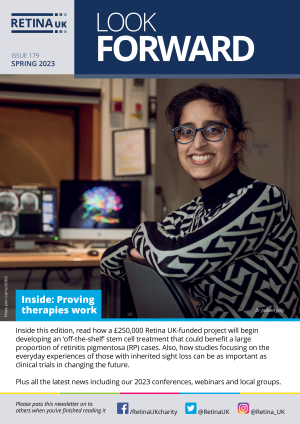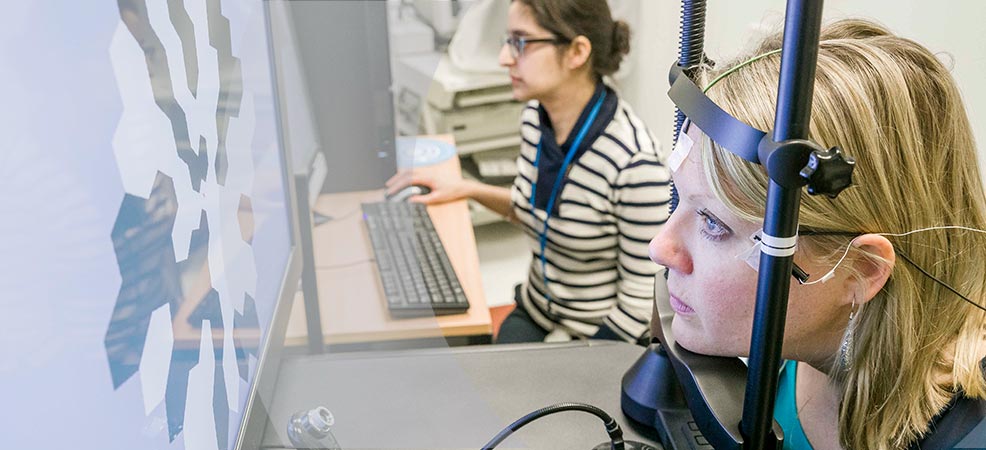
Look Forward – Spring 2023 – Issue 179
The Spring 2023 edition of the Retina UK newsletter, Look Forward, which includes articles about our upcoming events, research updates and more.
Search results

The Spring 2023 edition of the Retina UK newsletter, Look Forward, which includes articles about our upcoming events, research updates and more.

Biotechnology company ProQR has announced that its clinical trials of sepofarsen for Leber congenital amaurosis type 10 and ultevursen for USH2A-mediated retinitis pigmentosa will be wound down with immediate effect.

The development of a new treatment is a lengthy process, from early investigation of ideas and principles in the lab, through testing in cell and animal models to the final stages of clinical trials in human patients. The good news is that progress is increasingly rapid.
Growth factors are substances that promote the health and function of cells and tissues in the body.
Early results from clinical testing of a gene therapy to treat X-linked retinitis pigmentosa (XLRP) have shown partial reversal of sight loss in some patients.
CRISPR gene editing leads to improvements in vision for people with inherited blindness, clinical trial shows.
New stem cell treatment gains approval to enter US clinical trials
Introducing Splice Bio, a genetic medicines company with some exciting developments for Stargardt’s patients.

Aged 20, James was diagnosed with retinitis pigmentosa at a routine eye appointment in September 2015 and registered partially sighted, just prior to buying his first car and taking his driving test.

Rachael first noticed she had sight problems at the age of 15. She went to her local eye clinic, who said she had an astigmatism.